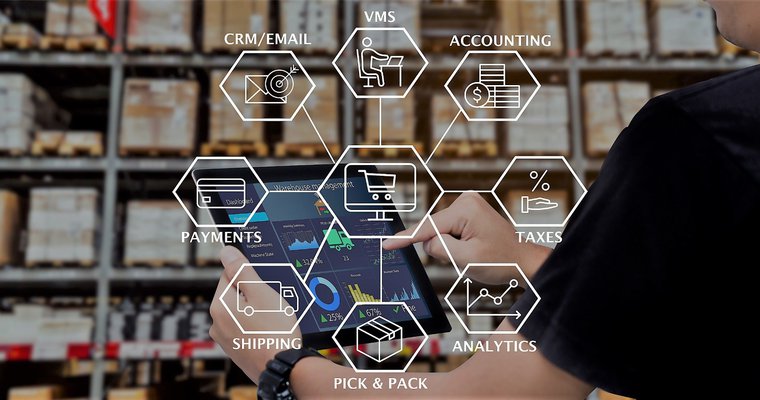(Editor’s note: This article is part one in a two-part series by John Hickey, co-founder of Tech 2 Success, on integrating an e-commerce solution in a convenience services business.)
Companies around the globe are turning to e-commerce for their procurement needs. The convenience services industry, especially office coffee services, is no exception.
Consumers have been conditioned by Amazon and their personal buying experiences to expect a frictionless buying experience in their business purchases. The convenience services industry is answering the call by implementing solutions that range from a simple online order form to a fully functional integrated e-commerce solution.
Operators know they need an e-commerce solution as the market they serve is rapidly evolving and their customers expect the same efficient experience no matter how or where they interact with your brand. An integrated e-commerce solution is a wonderful opportunity to increase sales and to create a positive experience with your brand from a sales, marketing and customer experience perspective.
Why integrate?
The task to re-enter and continue to maintain all your customer, product and pricing information on an e-commerce website is a demoralizing task when the data already exists in an established and maintained database in your VMS or ERP system. The duplication of data is frustrating and often the process will break over time as the ability to compare the two systems does not exist.
Technology’s main role in your business is to accelerate and automate a good process. Integrations enable this acceleration and automation and significantly reduce errors and delays. Inaccuracies caused by manual processes and human error result in back orders, missed deliveries, cancellations, refunds, revenue loss and potential reputation damage.
By implementing an integrated e-commerce solution, data entry personnel can be assigned to tasks that focus on delivering value for your business and customers rather than mundane tasks.
Growing a business can be difficult when the systems relied on every day are not integrated. Convenience services operators are familiar with facing this dilemma as they experienced this during the growth of other aspects of the business such as cashless vending, remote monitoring and micro markets.
By leveraging the data as it resides in primary systems, an integrated B2B e-commerce solution enables the business to scale without having to increase administration expense. Integration enables you to take advantage of the investment you have made in your existing systems and processes. The increase in orders and order volume can be handled within your existing business process flow without much adjustment.
Integrations to consider
Following are the systems to integrate.
Core systems. When referring to convenience services and office coffee or pantry service, the immediate system to integrate with is the vending management system. The VMS acts as the system of record for customer management, products and pricing, order management and accounts receivable. Direct integrations with LightSpeed for order picking keep the warehouse fulfillment team from being negatively impacted with the implementation of an e-commerce solution.
Accounting systems. Integrations with accounting systems like QuickBooks and interfaces for importing Microsoft Excel spreadsheets enable operators to flexibly integrate their data with their e-commerce platform.
Payment systems. Successful e-commerce implementations must offer users numerous payment options to facilitate orders. Integrating with credit card processors not only reduces accounts receivable headaches, but also alleviates any PCI compliance concerns your company may have as the credit card can be tokenized by the processor and sensitive data kept out of the operator’s possession altogether. If you are considering direct to consumer sales, also known as B2C, PayPal’s instant checkout functionality is an integration that directly increases conversion rates.
Taxes. In addition to traditionally available convenience services systems, e-commerce opens the opportunity to introduce many exciting features to integrate into the business. If the VMS or accounting system integration does not support sales tax calculation, consider integrating with an e-commerce sales tax software such as Avalara or Taxjar to calculate and potentially automate filing sales, use and VAT taxes to various jurisdictions.
Shipping. As customers are working from home and operators learn more about the cost to serve associated with each delivery, shipping options from logistics providers like FedEx, UPS and USPS are being leveraged to deliver low volume orders to local businesses and orders sent to homes. Fortunately, integrations are available to display actual shipping costs in the checkout process and applying the costs to the order total. Additionally, integrations with software platforms like ShipStation allow operators to efficiently print paid shipping labels in the warehouse and apply them to packages to be shipped after they are picked.
CRM and email. To bring the process full circle, many operators are considering or are using customer relationship management platforms and email marketing platforms like Mailchimp and Constant Contact to effectively communicate with customers. Integrating your e-commerce with these tools allows operators to engage loyal customers and re-engage customers who have not ordered in a while.
Analytics. Get ready to learn a lot about your customers’ behavior. Tools like Google Analytics integrated with your e-commerce solution will give you the information required to adjust your offering. Understanding shopping behaviors like cart abandonment provide opportunities to re-engage customers with automated strategic messaging.
In part 2 of this two-part series, we will explore how to choose an integrated e-commerce solution.


